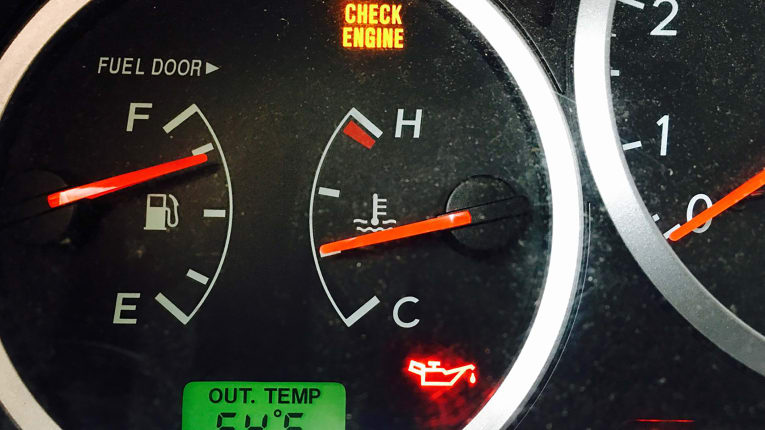CARS.COM — Whether you drive a car, a truck, an SUV or a van — and whether it runs on gas, diesel or electricity — all vehicles have one thing in common: They all rely on fluids — lots of fluids, and you have to make sure they don't run low.
Here's how.
Related: More Videos
Washer Fluid
Let's start out easy with something all cars have: washer fluid. It's simple enough. Find the reservoir and top it off. But know this: Sometimes it's not where you'd expect.
Motor Oil
Motor oil is one of the most crucial fluids and the one most likely to run low, especially as your car ages and potentially leaks or burns oil. With the engine off and parked on level pavement, find the dipstick, wipe it off, reinsert it, remove and check. The best scenario is that the oil will be at the top of the operating range; if it's below halfway, you should top it off. Typically, the range represents 1 quart of oil. Do not overfill the engine oil trying to get ahead of a problem — that can cause trouble.
Coolant
Coolant is the liquid that keeps your car's engine cool — it's a mix of antifreeze and water. Nowadays, all you have to do to check the level is look at the recovery tank reservoir. The translucent plastic lets you see how full it is. If you don't see any coolant, especially when the car is hot, you're definitely low and should add some — 50/50 coolant and water.
Important: Do not open the recovery tank or the radiator until the car has cooled off completely.
Brake Fluid
Some cars have sensors that will warn you on the instrument panel if your brake fluid is low, but you should check just to be sure. Nowadays, brake fluid reservoirs are like coolant recovery tanks — translucent and clearly marked so you can tell if they're full. If it's not, top it off and keep an eye on it because brake systems typically don't lose much fluid unless there's a leak.
Automatic Transmission Fluid
If you have an automatic transmission, you almost certainly have transmission fluid, but that doesn't mean you'll have to check it yourself because new cars increasingly have sealed transmissions. On older cars, it was common to have a dipstick, usually closer to the firewall than the oil dipstick.
Always follow the guidelines for your car. In most cases, the car should be fully warmed up from being driven and the engine running. Note that there usually isn't a separate filler location for the transmission, so you'll need a funnel to top off right at the dipstick tube.
Power Steering Fluid
For most of history, power steering has been hydraulic, which means it has fluid, too. Typically, you will find the power steering pump driven by the belt — that'll help you find it, and there's an integral reservoir built right in. Usually, there's a cap with a short dipstick built in that shows you if you've got enough fluid.
Nowadays, hydraulic power steering is on its way out. In the past few years, electric power steering assist has taken over. If you have a newer car, you may not have any fluid at all.



Leave a Reply